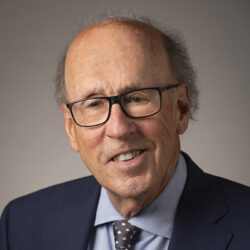By Sharon MILLS
Around the world, 1st April is known as “April Fools’ Day”. Historically, there have been different arguments made about where this day of pranks and hoaxes came from including that time when the world switched from the Julian calendar to the Gregorian calendar in the 16th century, and New Year’s Day moved from April 1 to January 1.
Apparently those who continued to celebrate New Year’s in April were mocked and basically became the subjects of pranks…the “April Fools”. Wherever it came from, it has been accepted and observed by people all over the world as that one day in the year where no prank is too expensive. Today’s expression of April Fools’ Day is as broad and intense as civilisation’s advancement.
As person-oriented as April Fools’ is, brands too have gotten involved and typically create buzz around what turns out to be a big hoax, sometimes teasing with an unexpected product evolution or ridiculous new product.
Over the years, brands around the world have invested more and more in April Fools’ marketing activities as the second quarter of the year kicks off; producing high definition (HD) videos and new product packaging, collaborating with influential personalities and engaging their a-list celebrity brand ambassadors to be part of the biggest practical joke of the year. The brand gets to “play the fool” like a human would and chimes in on the trend, thereby meeting their target where they are and in effect creating an essence of relatability. Sounds great for a brand doesn’t it?
Well, “the harder they fall” seems to be another destination this fanfare can lead to in my opinion. Whether we agree that brands are the perception people have about a product (or service), are the personality of a product or the sum total of emotions, functions and benefits of a product, brands are meant to appeal to people and not take them for a fool. They are meant to cater to the need state of their target and be there when the target reaches for them.
Teasing your consumers with products they actually hope for, upgrades, variations and pack evolutions that will actually improve their experience of your brand, only to reveal it as an April Fools hoax is a sure-fire way to upset your consumers. And upset consumers could be the beginning of the end for your brand.
After witnessing the route that some local and foreign brands took in tapping into April Fools’ day this year 2024, it become even more evident the high level risk brands take in daring to play with their consumers.
One may ask; should brands even dare to chime into April Fools or should they simply abstain and focus on the more widely appealing and less tricky (all pun intended) holidays and iconic dates? I believe brands can dare, because for those who own brands and those of us who manage them, there are justifiable reasons to tap into such a popular day as April Fools’ Day including the relevance, visibility and reach that can be attained through various media channels – it could do wonders for brand awareness, engagement, affinity and equity in the long term.
What I will however advocate for, is that brands must certainly adopt more tactful ways to create hoaxes or play pranks (if they must), which will work to the benefit of the brand (and the pleasure of its consumers) rather than attracting negative perceptions and upsetting consumers.
How then can brands be more tactful with their April Fools’ efforts? Glad you asked! As I discussed this with Kwesii, a true student of great advertising, we came up with what I call a Formula for Brands’ April Fools’ Risk which highlights key criteria I believe the efforts must meet to be tasteful to consumers – criteria that brand owners, marketing managers, brand managers and agency folk alike can tap into:
- Ridiculous
It’s got to have a high sense of ridiculousness that makes people wonder – How? Why? Have they lost their mind?
- Possible
It’s crazy but they can actually do it. Like Mercedes Benz announcing a pet comfort feature in their luxury cars.
- Ensure it is not a perceived need state of the consumer
It shouldn’t be something your customer actually needs because then the sentiment becomes “you know what I need and instead of giving it to me, you tease me with it and come back to say it was a joke?” That’s wild.
- Plays in the middle of absurd and possible
It should play between unreasonable but also possible. A service or product that no one ever asked for but that consumers know you are capable of doing. Like the launch of a perfume named after a best selling book, promoted by the author of the book.
- Results in comedy
The joke/ the end/the reveal should be funny for the consumers too, not just you. It should end in laughs for all, not tears and certainly not in a new found dislike for your brand.
Conclusion
Essentially, in activating April Fools’ Day marketing activities, avoid making fun of or fun about your consumers. These pranks/jokes should give all stakeholders an opportunity to laugh together and deepen the bonds between brand and comsumer. And just like in human interactions, both brand and consumer will be better for it.
Everyone loves a good laugh but no one wants to be the butt of a joke. Brands are serious business; they are currency for thriving markets and sustained by the consumers that keep reaching for them. In the world of brands, consumers are nobody’s fool.
>>>the writer is a creative consultant with expertise in marketing strategy, brand management, creative services management, marketing communications and creative direction. She’s the lead consultant at SMC Consulting, focused on creating, producing and elevating ideas for emerging and iconic brands worldwide. She can be reached via [email protected]










